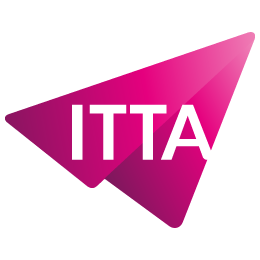Home > Trainings > IT Pro > Artificial intelligence > Introduction to Microsoft 365 and AI administration (AB-900)
Microsoft 365 administration is rapidly evolving with the integration of artificial intelligence. This AB-900 training provides you with a comprehensive overview of Microsoft 365 fundamentals, enhanced by the new capabilities of Copilot and intelligent agents. You’ll discover how these technologies are transforming the day-to-day management of cloud environments and boosting team productivity.
This course is designed for IT professionals who want to understand the Microsoft 365 ecosystem as a whole. You’ll explore core services like Teams, Exchange, and SharePoint. Then, you’ll learn to secure your data using advanced protection tools. The emphasis is on hands-on practice and real-world use cases to facilitate your learning.
Module 1: Explore the fundamentals of Microsoft 365 security
Module 2: Introduction to Microsoft 365 core services and administration controls
Module 3: Protect and govern Microsoft 365 data
Module 4: Explore Microsoft 365 Copilot and agents
Module 5: Perform basic administration tasks for Microsoft 365 Copilot
Module 6: Perform basic administration tasks for Microsoft 365 Copilot agents
Businesses face growing challenges in data management and collaboration. The transition to the cloud requires a structured approach to ensure business continuity. Microsoft 365 stands out as a comprehensive solution that meets the needs of modern organizations. Microsoft administration must take into account the specifics of each professional environment.
The integration of artificial intelligence is profoundly changing work methods. Teams gain efficiency through assistants capable of analyzing and processing information quickly. This evolution requires administrators trained in new technologies. Mastering AI tools becomes a major asset for supporting users in their adoption.
Understanding the underlying architecture of Microsoft 365 enables optimization of overall performance. Services are built around three fundamental pillars: communication, storage, and security. Exchange Online manages electronic communications with proven reliability. Teams centralizes instant messaging and virtual meetings. SharePoint organizes shared content according to a collaborative logic.
These components work in synergy to create a cohesive work environment. Administrators must monitor interactions between services to detect malfunctions. Data redundancy ensures constant availability even in the event of an incident. Geographically distributed data centers ensure minimal latency for all users.
The Microsoft 365 Admin Center centralizes essential configuration settings. This single interface simplifies daily management of licenses and permissions. Dashboards provide complete visibility into service status. Automatic alerts enable quick response to detected anomalies.
Data governance goes far beyond simple secure storage. It encompasses classification, retention, and controlled destruction of information. Microsoft Purview provides a comprehensive response to these complex regulatory requirements. Data loss prevention policies apply automatically according to predefined rules.
The identification of sensitive content relies on advanced recognition algorithms. Financial documents, personal data, and trade secrets benefit from enhanced protection. Encryption activates automatically during external sharing. Administrators can precisely trace who accesses what information and when.
Oversharing represents a major risk that is often underestimated. A file shared too broadly exposes the organization to unintentional leaks. Governance tools analyze existing permissions and flag dangerous configurations. This continuous vigilance preserves confidentiality without hindering legitimate collaboration.
The introduction of AI-enhanced business applications requires careful planning. Organizations must evaluate their actual needs before investing in licenses. A limited pilot allows measurement of the impact on team productivity. User feedback then guides larger-scale deployment.
Training represents a critical success factor for adoption. Employees must understand how to fully leverage artificial intelligence capabilities. Hands-on sessions demonstrate concrete use cases tailored to each profession. Continuous support fosters gradual appropriation of new tools.
Pay-as-you-go pricing models offer welcome flexibility. Companies adjust their spending according to actual service consumption. This approach avoids oversized investments in unused licenses. Regular monitoring of usage statistics optimizes operational costs.
What’s the difference between an agent and Copilot?
Copilot assists users in their daily tasks across all business applications. An agent specializes in a specific area such as document research or technical support. Agents integrate into automated workflows while Copilot intervenes on demand.
Can access to certain artificial intelligence features be restricted?
Absolutely. Role-based access control allows limiting features by user group. Administrators precisely define who can create agents or use Copilot. This granularity ensures strict governance while preserving productivity.
How can the return on investment of these technologies be measured?
Productivity indicators measure time saved on repetitive tasks. Adoption statistics reveal actual user engagement. Satisfaction surveys evaluate the perceived impact on professional daily life. The reduction in security incidents quantifies the benefits in terms of protection.
No Events

Nous utilisons des cookies afin de vous garantir une expérience de navigation fluide, agréable et entièrement sécurisée sur notre site. Ces cookies nous permettent d’analyser et d’améliorer nos services en continu, afin de mieux répondre à vos attentes.
Monday to Friday
8:30 AM to 6:00 PM
Tel. 058 307 73 00
ITTA
Route des jeunes 35
1227 Carouge, Suisse
Monday to Friday, from 8:30 am to 06:00 pm.